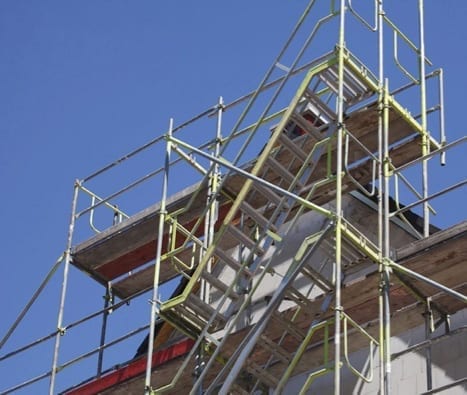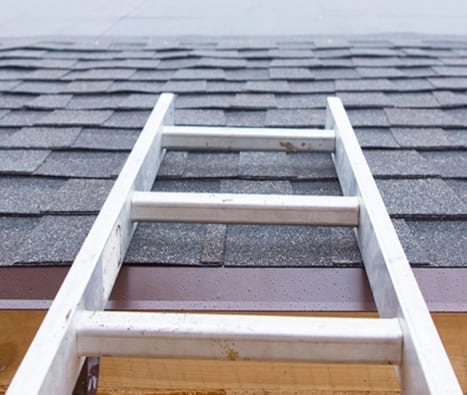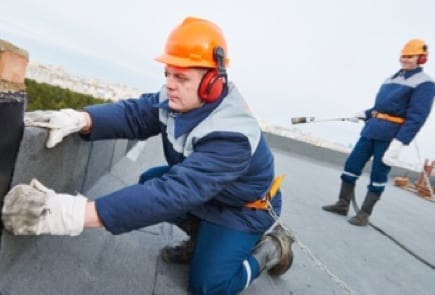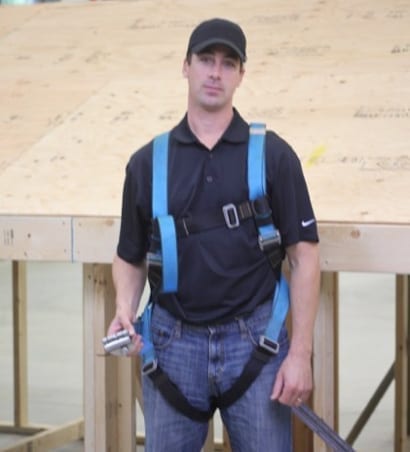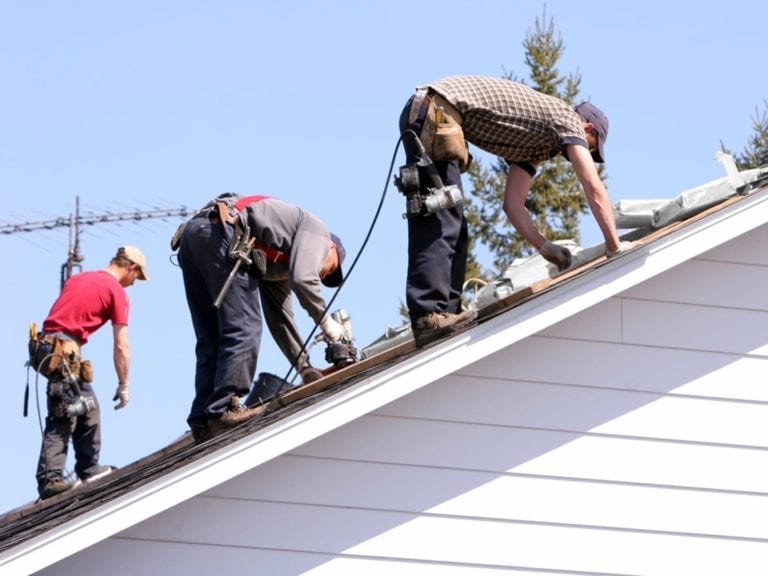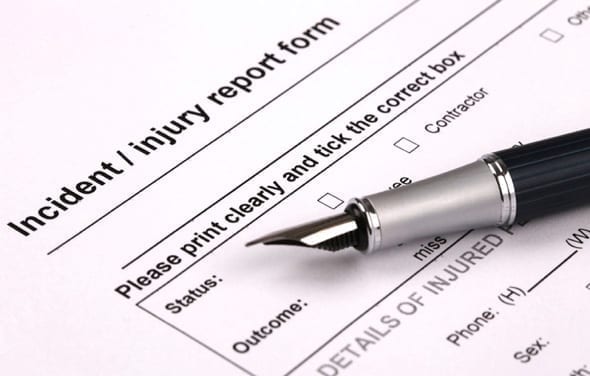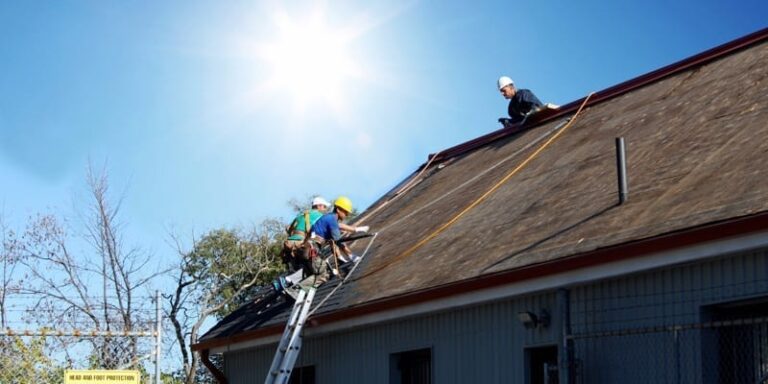How Workplace Injuries Impact Profitability for Roofing Companies
How Workplace Injuries Impact Profitability for Roofing Companies
Table of Contents
- Falls from height is a serious issue in the roofing industry
- Falls are more likely in smaller roofing companies
- What are the direct and indirect costs of workplace injuries?
- Workplace injuries can add up in more ways than one
- Calculate the potential costs of employee injury for yourself
- Prevention is the key to a healthy workforce – and a healthy bottom line
Workplace injury costs in the roofing industry
We all know that working in the construction industry, and specifically roofing, comes with risks.
Roofers face a variety of hazards on the job, including those associated with working at height, ladders, power tools, electricity, noise, hazardous substances, and even extreme temperatures.
But before getting into the costs of worker injuries, the most common workplace injuries and some illuminating workplace injury cost statistics, let’s dig deeper into the job risks unique to the roofing industry.
Falls from height is a serious issue in the roofing industry.
Between 2003 and 2013, falls were the leading cause of death in the construction industry. Specifically, falls from roofs accounted for one-third of fatalities during that period.
Falls from elevation is also the leading cause of injury. In fact, the most commonly cited violation in construction is fall protection, according to OSHA (Occupational Safety and Health Administration). Not surprisingly, the potential for serious injury or even death from a fall increases significantly as working heights increase. But falls from low heights pose risks, too. Roofers can still suffer many different types of injuries in the workplace, including fractures, spinal cord injuries, concussion and brain damage.
The following includes OSHA’s top 10 most frequently cited standards following inspections of worksites*. Take note of how many can impact the safety of your employees.
- Fall protection
- Hazard communication
- Scaffolding
- Respiratory protection
- Lockout/tagout
- Powered industrial trucks
- Ladders
- Electrical, wiring methods
- Machine guarding
- Electrical, general requirements
*https://www.osha.gov/Top_Ten_Standards.html
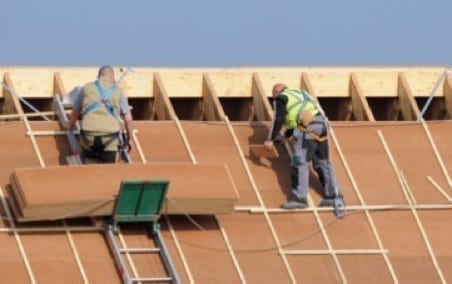
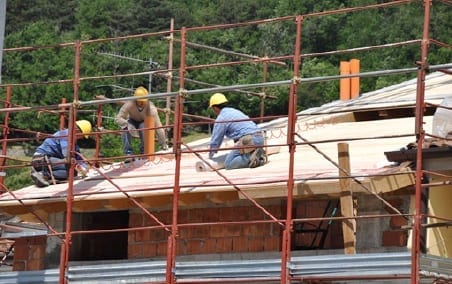
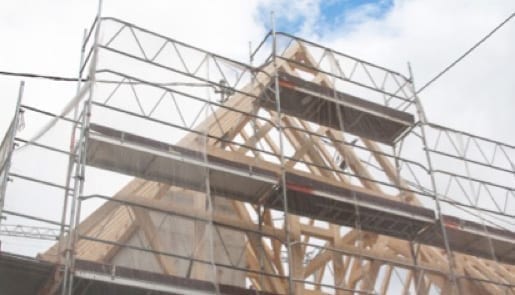

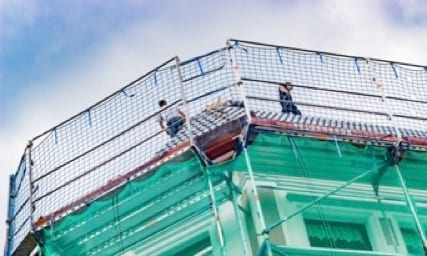
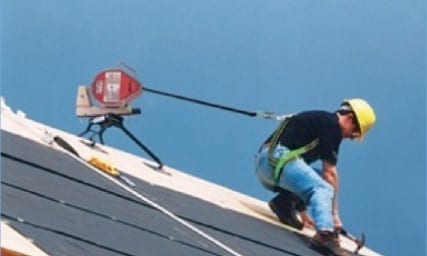
Of course, workplace injuries affect every employee that works at height, in every region of the world.
In Canada, the Ontario Ministry of Labour has identified a number of hazards that lead to the most common workplace injuries on low-rise residential construction projects*:
- Falls from a roof
- Inappropriate use of fall protection systems
- Falls from ladders
- Inappropriate ladder setup
- Inappropriate material handling and storage activities leading to musculoskeletal disorders
- Heat stress
- Debris falling from the roof during construction
- Unstable ladders from poor or weak ground conditions
- Using damaged ladder or household ladders
- Contact with overhead hydro lines
- Poorly maintained equipment
Safe Roofing at Low-Rise Residential Construction Projects, Ontario Ministry of Labour, 2015
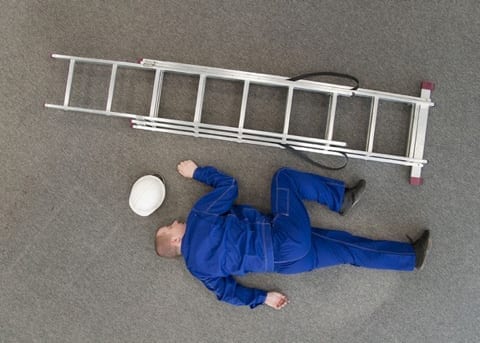
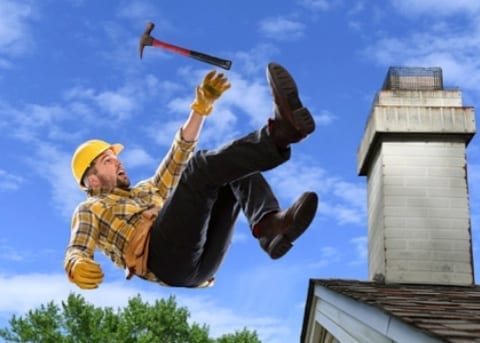
Falls are more likely in smaller roofing companies.
According to statistics from the CPWR (Center for Construction Research and Training), falls at companies employing between one and 10 individuals accounted for over 54% of fall-related deaths (at larger organizations, those numbers ranged from approximately 9%-16%).
Why the difference? It’s generally believed that smaller businesses do not have either the financial resources or commitment to invest in the safety measures as effectively as their larger peers.
However, as you’ll see, there’s a business case to be made for creating a safe workplace – one that is even more relevant to smaller businesses considering the enormous financial implications of an employee injury.
What are the direct and indirect costs of workplace injuries?
No doubt the most significant impact associated with a workplace injury is the human cost to the employee. An injury can lead to emotional hardship and enormous financial burden for the employee and their families.
At the same time, workplace injuries and illnesses can make a major impact on your bottom line when you consider direct and indirect workplace injury costs.
What are direct costs of a workplace injury?
Direct costs include workers’ compensation payments, medical expenses, and costs for legal services.
- Workers’ compensation payments compensate the health system for any medical, pharmaceutical and recovery costs
- If the workplace injury or illness is a result of faulty or absent preventive safety equipment, you’ll be asked to fix, replace or install it
- If the employee’s workplace injury or illness is the result of an employer’s lack of compliance to safety law, employers will be asked to pay for court proceedings and associated fines
In most U.S. states, roofers have the highest occupational risk classification. According to the U.S. Bureau of Labor Statistics, workers’ compensation costs are higher in the NRCM (natural resources, construction and maintenance ) group than in other occupations.
What are indirect costs of a workplace injury?
Indirect costs are less obvious, but can actually exceed direct costs. Indirect costs include:
- Wages paid to injured employees for absences not covered by workers’ compensation
- Finding and training replacement employees
- Accident investigation
- Lost productivity
- Implementation of corrective measures
- Repairs of damaged equipment, tools and property
Although more challenging to calculate, a workplace injury or illness can also negatively affect employee morale and increase employee absenteeism.
In an industry where finding and retaining good employees is always a challenge, demonstrating your commitment to worker safety can help differentiate your operation from the competition.
Workplace injuries can add up in more ways than one.
Here are some workplace injury cost statistics that caught our eye (all statistics U.S. Bureau of Labor):
- During March 2015, employers in the NRCM group (natural resources, construction and maintenance occupations) spent an average of $1.02 per hour worked for workers’ compensation, compared with $0.45 for all occupations
- Workers’ compensation costs made up 3% of total compensation costs in the NRCM group, compared with 1.4% in all occupations
- Falls from elevations cost insured roofers $54 million annually between 2005 to 2007 (the last period for which statistics were calculated), according to the National Council on Compensation Insurance
- The average cost to a roofing company when an employee falls from an elevation is approximately $106,000 per injured employee, according to OSHA (compare that to under $50,000 which is the average cost of a fall from elevation for all other occupational classifications)
- Falls from ladders or scaffolds by roofers cost approximately $68,000 each (OSHA)
Note, while the extent to which you pay the direct costs depends on the nature of your compensation insurance policy, you will always pay the indirect costs.
Workplace injuries can affect every aspect of your business – from employee loyalty to your bottom line. That makes workplace injury prevention a smart business decision, in addition to being the right thing to do.
Calculate the potential costs of employee injury for yourself.
To approximate the direct and indirect costs of different types of injuries in the workplace, and the impact they can make on your profitability, OSHA offers an online estimator.
Using this estimator, we plugged in an example based on an employee experiencing one fracture while on the job. The estimator gave us this:
Estimated Direct Costs: $50,778
Estimated Indirect Costs: $55,855
Combined Direct & Indirect Costs: $106,633
Prevention is the key to a healthy workforce – and a healthy bottom line.
No discussion of workplace injuries is complete without mentioning some of the ways in which roofing companies can create safer work environments for their people. Remember, the vast majority of roofing accidents can be avoided entirely with the right planning, training and safety equipment.
- Unprotected edges
- Fragile surfaces, skylights, holes or vents
- Weather conditions such as wind and rain
- Trip hazards such as roof vents and other protrusions
- Overbalancing or losing grip on steep pitched or sloping roofs
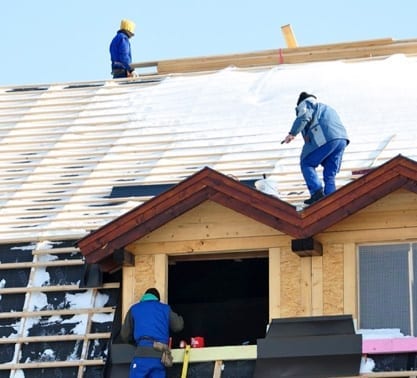

The following includes some important safety considerations when helping ensure worker safety, but it is by no means a complete list.
Ladders
A ladder must always be well secured and up to the required safety standards.
Scaffolding
In addition to being solid and stable, scaffolding must have its cross braces and a guardrail.
Fall protection
While working near an unguarded edge, employees should be wearing a travel-restraint, fall-restricting or fall-arresting system.
Guardrails
Guardrails should be installed as close as possible to the open edge.
Electrical safety
Ensure that employees and any equipment remain at a safe distance from any overhead electrical wires.
Personal protective equipment
Working on a roof is equivalent to working on a construction site, so hard hats and steel-toed boots are musts. Additionally, hot bitumen is a serious hazard while working around tar pots. To prevent burn injuries, face shields and proper gloves are necessities.
In the event of emergency
Employees should be equipped and empowered to respond to any emergency that affects their co-workers. Ensure there are suitable fire extinguishers and a first aid kit readily available on-site.
Training
Every employee deserves to be trained so they are fully aware of work hazards.
